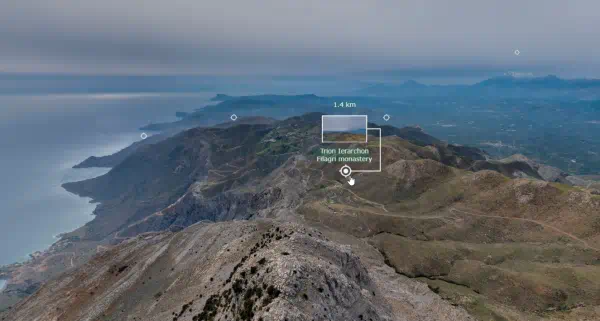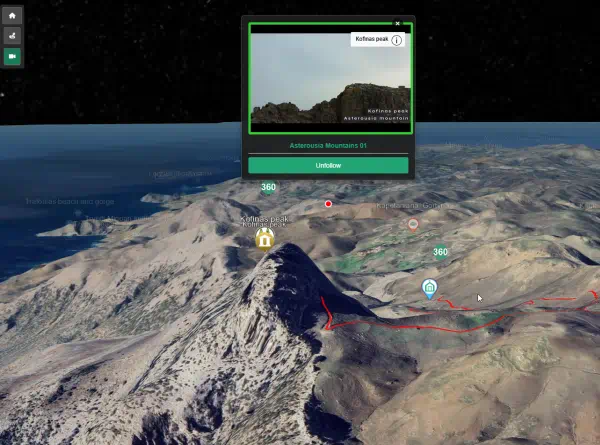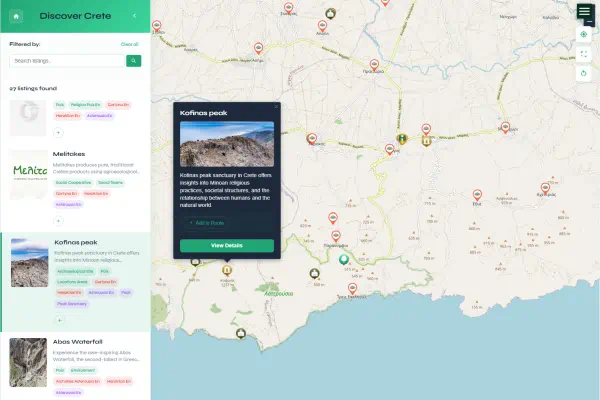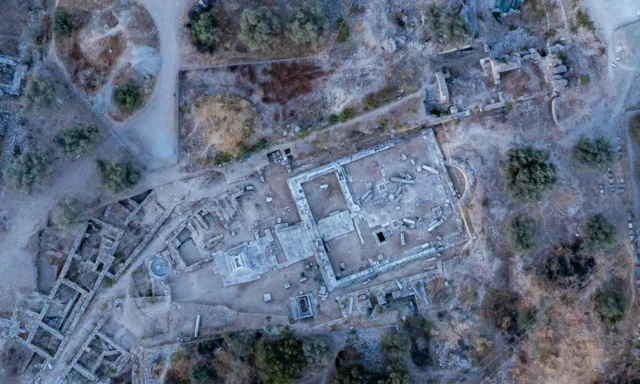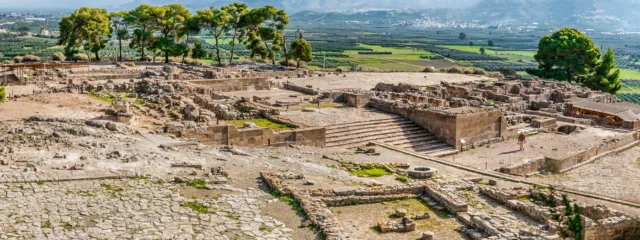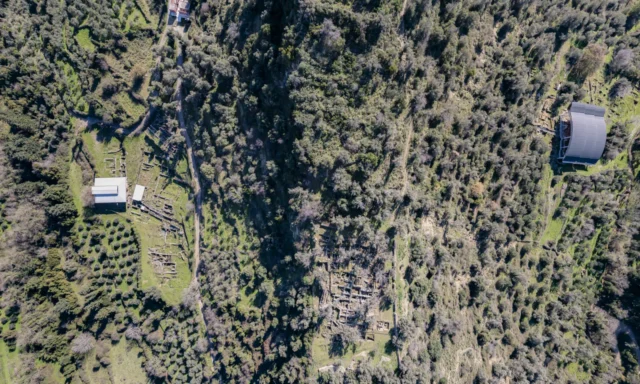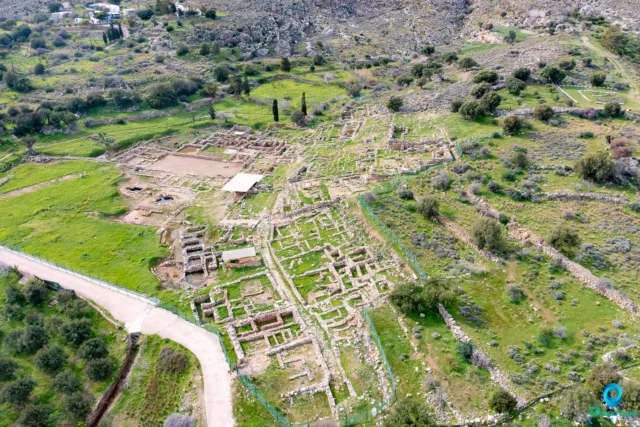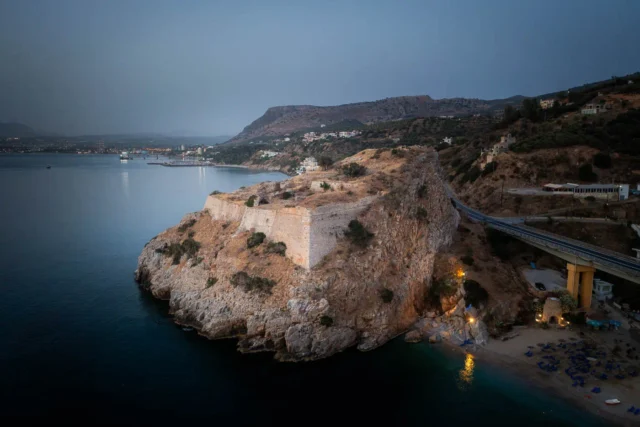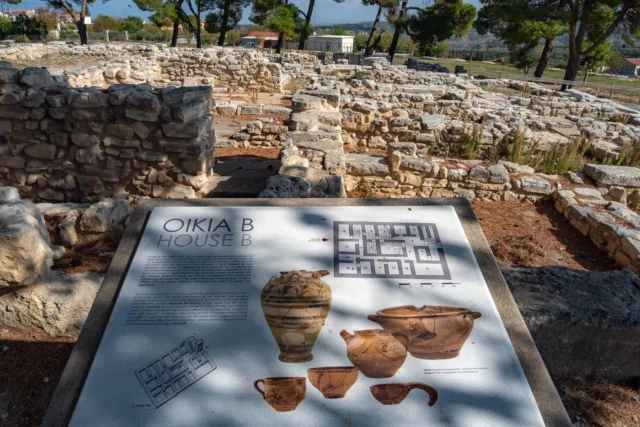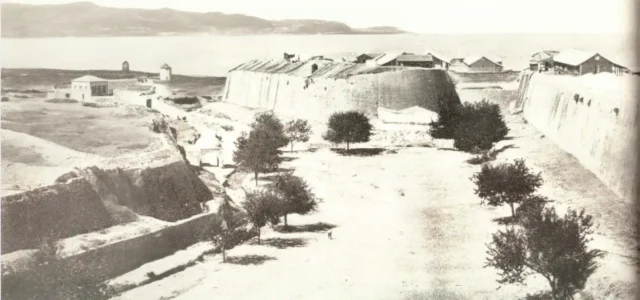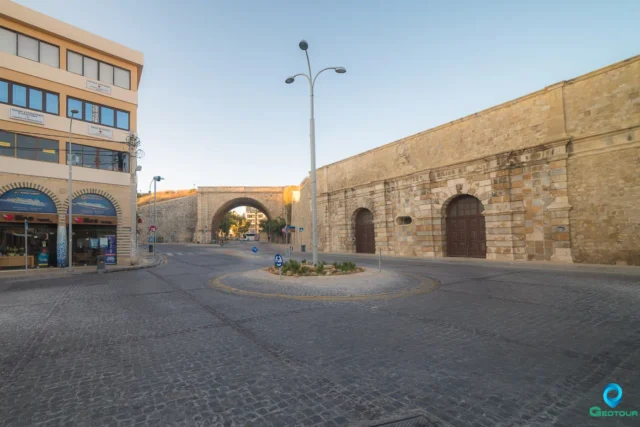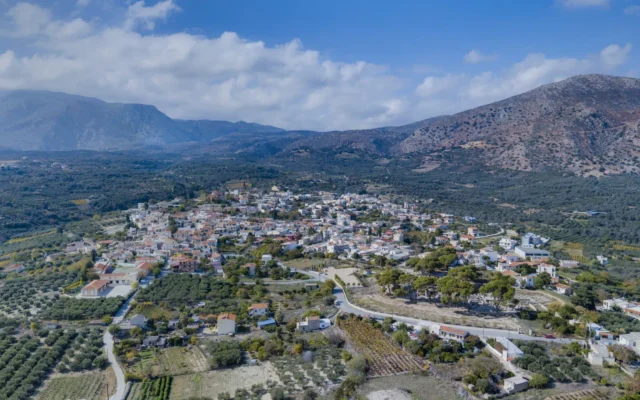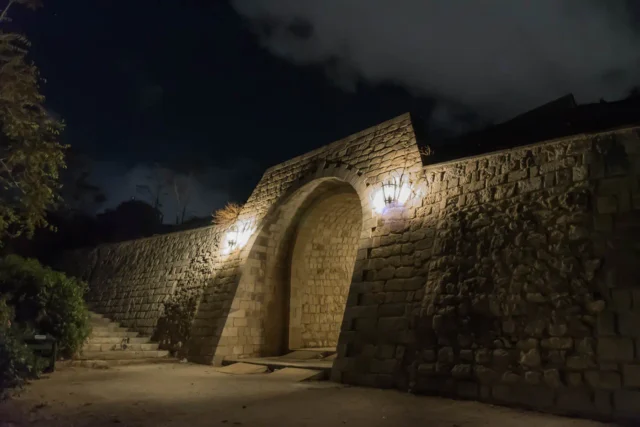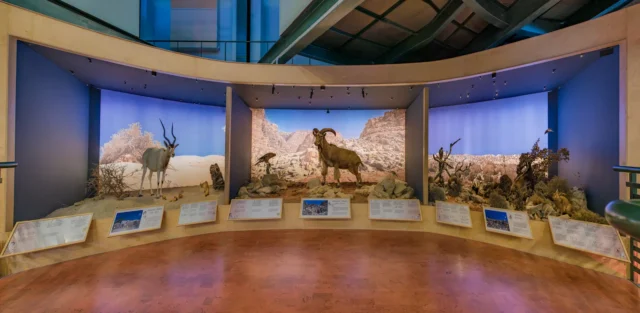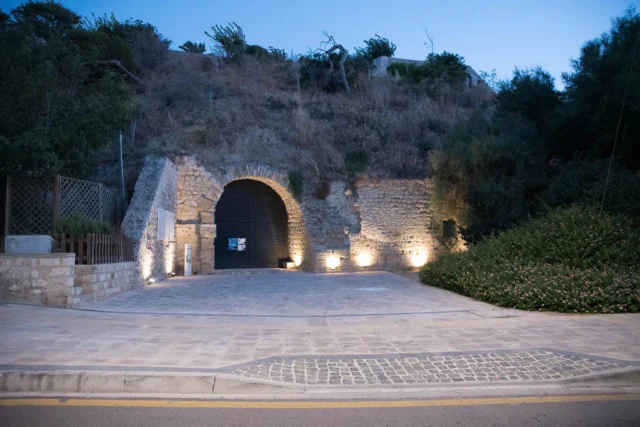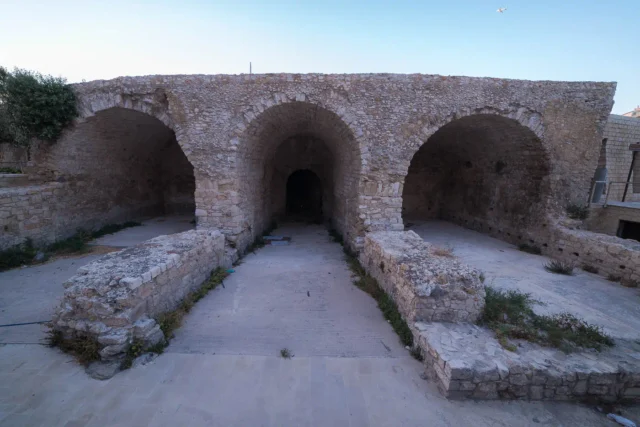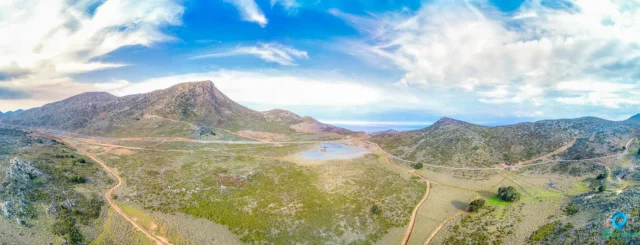Gazi is a western suburb of Heraklion and the administrative center of the Municipality of Malevizi in the Regional Unit of Heraklion, Crete. It previously belonged to the Province of Malevizi in the Prefecture of Heraklion. The area hosts various municipal services, primary schools, a middle school, a high school, a Citizen Service Center (KEP), a community center for the elderly (KAPI), and a medical clinic.
History
The settlement of Gazi is located west of the Gazanos river, from which it derives its name. This river is identified with the ancient Triton river. The historian Andrea Cornaro mentioned that the Gazanos river originates from the mountains and its waters never run dry. During the Ottoman period, it was referred to as the river of the Willows (Sogut deresi).
The earliest written mention of the settlement dates to 1379, found in a document from the Ducal Archive of Chandax. The settlement is also referenced in the “Descrittione dell’ isola di Creta” by F. Barozzi in 1577, in the census of Peter Kastrofylakas in 1583 as Gasi with 108 inhabitants, and in the report of F. Basilicata in 1630. During the Venetian period, there was arable land in the village belonging to the church of Saint Mark, which included vineyards and gardens.
During the Ottoman era, Gazi was inhabited by a number of Ottomans who owned significant properties, such as the metochi (farmstead) of Abdin Bey and the metochia of Katirci Oglu Mehmet Pasha and his son Mustafa Veliuddin in Skafidara.
Gazi was the site of several battles between Christians and Turks during the Cretan Revolutions for the island’s independence. A particularly significant event in the area’s history is the battle of March 2, 1868, during which the leader of Malevizi, Captain Herakles Kokkinidis, was killed at the Gazani Kamara (arch). In one of the battles of the 1897 Revolution, Gazi and the Abdin Bey metochi were captured and burned by the Christians.
Archaeological Findings
The area of Gazi holds significant archaeological interest, with important findings from the Minoan period and sporadic discoveries from the Roman period. The earliest evidence of human presence dates back to the Subneolithic and Protopalatial periods.
In the early 20th century, during road construction, pottery from the Protopalatial and Middle Minoan periods was discovered. Archaeologist Joseph Hatzidakis also identified some pottery from the Subneolithic period, suggesting the earliest settlement dates to the end of the Neolithic era. Research in the area revealed part of a Late Minoan house, leading to the conclusion that a settlement existed from the Mycenaean to the Roman period. A Roman-era tomb was also found in the same vicinity.
Sir Arthur Evans noted the remains of a Minoan settlement at the mouth of the Gazanos river, which he suggested served as the harbor for Tylissos. Recent excavations by D. Vallianou on the “Ammouda” hill near Ammoudara revealed building remains and Late Minoan III pottery, indicating the presence of a coastal Minoan harbor facility.
The most prominent archaeological site is the Minoan domestic sanctuary at Baïria, located on a low hill. In 1936, two clay figurines of a Minoan Goddess were accidentally discovered. Subsequent excavations led by Spyridon Marinatos uncovered a 4×4 meter room, part of a larger building, which was identified as a domestic sanctuary from the Post-Palatial period. A total of five female figurines with upraised hands were found. One of the most famous is the “Goddess of the Poppies,” who wears a diadem with three poppy capsules, from which opium is derived, suggesting a connection to healing and fertility. Other figurines feature symbols like doves and the sacred horns of consecration. These findings are dated to the Late Minoan IIIB or IIIC period.
Numerous tombs have also been discovered in the area:
- Makráki Metóchi: Protopalatial pottery found near rock shelters, indicating burials.
- Baïria: A rectangular burial building from the Middle Minoan IA period containing two larnakes (clay coffins) and pottery.
- Gazanos River Mouth: A Middle Minoan III pithos (storage jar) burial of an adult male.
- Mechanes: Middle Minoan burials in rock cavities.
- Top Alti: Two larnakes and a burial pithos from the early Neopalatial period.
- Gazi (modern settlement): A Late Minoan IIIB chamber tomb and a larnax decorated with rosettes.
- Skafidara: A Late Minoan IIIB chamber tomb excavated by Stylianos Alexiou, containing four significant larnakes. One is decorated with a depiction of a ship, believed to symbolize the deceased’s journey to the afterlife. An earlier discovery in the same area was a horseshoe-shaped tomb with a larnax decorated with spirals and double axes.
- Roman Period: Remains of a farmhouse and tile-roofed graves were found at Mechanes.
The ancient city of Apollonia has been hypothetically placed in the Gazi area by several researchers, including R. Pashley and M. Guarducci, though archaeological evidence to definitively confirm this remains insufficient.
Administrative History
The settlement was officially recorded in 1925 when it was annexed to the then-community of Tylissos. In 1930, it became the seat of the newly established community of Gazi. In 1994, it was designated the seat of the Municipality of Gazi, and in 2010, with the Kallikratis plan, it became the seat of the larger Municipality of Malevizi. According to the Kallikratis and the subsequent Kleisthenis I plans, the municipal community of Gazi includes the settlements of Agioi Theodoroi, Agios Georgios Methystis, Kavrochori, Kollyvas, Skafidaras, and Timios Stavros.
Settlement: Key Points
- Location: A western suburb of Heraklion and the seat of the Municipality of Malevizi.
- Historical References: First mentioned in writing in 1379. It was a significant site during the Venetian and Ottoman periods and played a role in the Cretan Revolutions of the 19th century.
- Archaeological Significance: Rich in archaeological finds, especially from the Minoan civilization. Key discoveries include a domestic sanctuary with unique goddess figurines at Baïria and numerous tombs from various Minoan periods. There is speculation that the ancient city of Apollonia might be located in the vicinity.
- Current Status: Functions as the administrative center for the Municipality of Malevizi, providing various services to the local population.
- Population Data: The population of Gazi has seen substantial growth, particularly from the late 20th century onwards.
Year |
Population |
Notes |
1583 |
108 |
as Gasi |
1881 |
292 |
292 Muslims |
1900 |
252 |
|
1920 |
79 |
|
1928 |
60 |
|
1940 |
66 |
|
1951 |
125 |
|
1961 |
323 |
|
1971 |
465 |
|
1981 |
830 |
|
1991 |
1,395 |
|
2001 |
8,018 |
|
2011 |
12,606 |
|
2021 |
13,526 |

